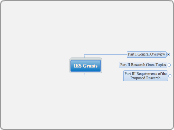Works Cited
Rottenberg, Annette T. and Donna Haisty Winchell. “Chapter 11: Planning and Research” Elements of Argument: A Text and Reader. 11th ed. Boston, MA: Bedford/St. Martins, 2015. 337-371. Print.
Elements of Argument: A Text and Reader
Chapter 11
Writing an Effective Research Paper
Taking Notes
Summarize instead of quote!
Make notes of the bibliographic info
along the way and cite it! Create a new
file for sources.
Use your pre-writing to help you keep structure
and note only relevant material.
If quoting, copy the sentence verbatim in quotes
and use ellipses for any left out info.
Evaluating Sources
Evaluating Sources for Relevance:
Choose sources with relevant terms and
credibility.
Evaluating Sources for Reliability:
sources should be current, objective,
provide enough info on the subject,
and relevant.
Finding Sources
Other types of sources include:
Multimodal sources
Web-based sources: not a good place
to look for traditional info; does not have
good quality control and can locate topics
with little relevance.
Government Resources
Statistics
Encyclopedias: offer overviews and easy
info. Has good bibliographies.
Limit a search through: publication date,
language, format, peer-reviewed articles, full text,
and images.
To search for more than one topic, students may
use connectors (Boolean operators).
Subject searching- use terms from a list of
subject headings (or descriptors) from creators
of the database.
Keywords- words most relevant to your
search or subject.
Pros: can use terms that come to mind and
will find a wide variety of info.
Cons: may be more than 1 way to express a
topic and might get irrelevant material.
Databases- allows you to search for
books, videos, or personal publications.
Initiating Research
Use the correct types of sources!
1. Primary sources- firsthand, or directly from
the source, information. Examples are: field
research, letters, photos, and text of law.
2. Secondary sources- provide commentary on
and analysis of a topic. Examples are: news,
opinion pieces, and reports.
Sketch a preliminary outline! Use roman
numerals for major divisions and A,B,C levels
for paragraph ideas.
To keep your research on track: focus
your investigation on building your argument,
use at least two pieces of evidence to support
each point, use a variety of sources, have
authoritative sources, do not let your opinion
be swayed, do not ignore opposing info, and
use the right number of sources.
Finding an Appropriate Topic
Evaluate all possible topics! Effective research
papers are: interesting, debatable, not too broad,
not too narrow, and not too unconventional.
Write down all possible topics! Putting
words on paper will stimulate the brain's
thought process.
First look at the paper's guidelines to narrow
your selection.









